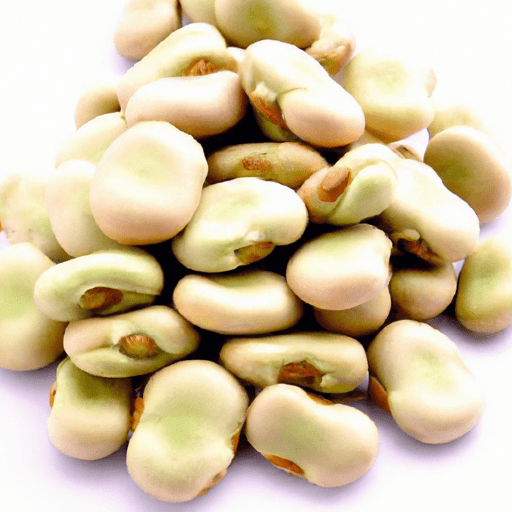Broad Beans: A Delicious and Versatile Ingredient
Broad beans, also known as fava beans, have been a staple in Mediterranean cuisine for centuries. These hearty legumes not only add a delightful earthy flavor to dishes but also offer a myriad of nutritional benefits. Whether you are a fan of classic Mediterranean recipes or exploring new culinary horizons, broad beans are a versatile ingredient worth adding to your pantry. In this blog post, we will delve into the taste, common uses in cooking, nutritional value, and fascinating facts about these green gems.
Taste and Texture
Broad beans have a unique taste that can be described as nutty, buttery, with a slightly bitter undertone. Cooked fresh broad beans have a smooth and creamy texture that contrasts beautifully with their vibrant green color. As they are one of the few legumes that can be eaten raw, fresh broad beans provide a fresh and crisp bite that enhances salads and appetizers.
Common Uses in Cooking
Broad beans can be used in a wide variety of culinary creations. Here are some popular ways to incorporate them into your dishes:
Salads and Sides
Fresh or blanched broad beans are a delightful addition to salads. Pair them with ingredients like cherry tomatoes, feta cheese, mint, and lemon vinaigrette for a refreshing summer salad. Alternatively, mash cooked broad beans with garlic, lemon juice, and olive oil to create a flavorful dip or spread.
Dips and Spreads
In Mediterranean and Middle Eastern cuisines, broad beans take center stage in classic dishes like Ful Medames and Foul Mudammas. These traditional dishes feature mashed broad beans, often served with olive oil, cumin, and lemon juice. They make for a satisfying and protein-rich breakfast or an appetizing mezze dish.
Soups and Stews
Broad beans work wonders in hearty soups and stews. Their creamy texture and distinctive taste bring depth and richness to these comforting dishes. Add them to vegetable soups or stews, along with ingredients such as carrots, potatoes, and tomatoes, for a nourishing and flavorful meal.
Risottos and Pasta
Broad beans can elevate your risottos and pasta dishes to new heights. Toss them into a creamy risotto with fresh herbs and Parmesan cheese, or incorporate them into pasta dishes with garlic, olive oil, and grated pecorino cheese. Their unique taste and texture add a delightful twist to these classic recipes.
Nutritional Value
Broad beans are a nutritional powerhouse, offering a range of health benefits. They are an excellent source of plant-based protein, fiber, and complex carbohydrates. Additionally, these legumes contain essential vitamins and minerals such as folate, iron, magnesium, and potassium. Including broad beans in your diet can help support heart health, improve digestion, and provide sustained energy.
Fun Facts
Here are some interesting facts about broad beans:
- Broad beans are one of the oldest cultivated crops, dating back to at least 6,000 BC.
- In ancient Rome, broad beans were considered food for the lower classes and were often eaten by farmers and soldiers.
- Broad beans are known for attracting bees and other pollinating insects due to their vibrant and fragrant flowers.
- The term “fava” originates from the Italian word for “broad bean,” further emphasizing their significance in Mediterranean cuisine.
Next time you’re looking to incorporate new flavors into your cooking, don’t forget to celebrate the versatility of broad beans. From salads to stews, these green powerhouses add a unique taste and nutritional boost to your favorite dishes. So go ahead, explore the world of broad beans and unleash your culinary creativity!
Note: The images used in this blog post are for illustration purposes only and do not necessarily reflect the mentioned recipes.
Broad Beans
Origin: Broad beans, also known as fava beans, have been cultivated for thousands of years and are believed to have originated in Southwest Asia and North Africa. They were then introduced to Europe during Roman times.
Common Uses: Broad beans are versatile and can be used in many different ways. They can be enjoyed fresh, roasted, grilled, or pureed into a smooth paste. In Mediterranean and Middle Eastern cuisine, they are often used in salads, soups, stews, and dips like the famous Egyptian dish, ful medames.
Nutritional Benefits: Broad beans are a nutritious addition to a balanced diet. They are a good source of protein, fiber, and complex carbohydrates. They are also rich in vitamins and minerals such as folate, iron, manganese, and vitamin B6. Broad beans are particularly beneficial for vegetarians and vegans due to their high protein content.
Unique Properties: One unique property of broad beans is their ability to fix nitrogen in the soil through a symbiotic relationship with certain bacteria. This makes them an excellent crop for improving soil fertility. Additionally, broad beans contain a natural chemical called L-dopa, which has been studied for its potential benefits in Parkinson’s disease treatment.
Historical Significance: Broad beans have a long history and have played a role in various cultures throughout time. In Ancient Rome, they were considered food for the poor and were associated with the festival of the dead. Broad beans were also believed to have mystical properties and were used in divination rituals. In some cultures, they have been used as a symbol of fertility and good luck.
Remember to always cook broad beans properly as the raw beans contain a compound called vicine that can cause a condition called favism in individuals with certain genetic deficiencies.




Use the share button below if you liked it.
It makes me smile, when I see it.